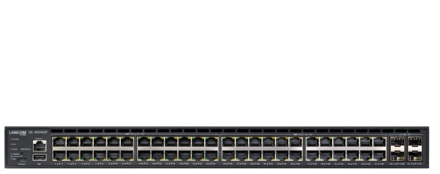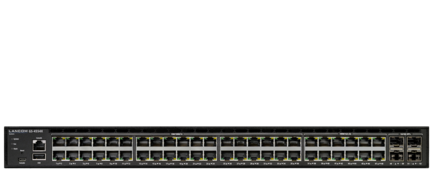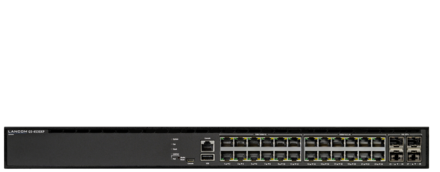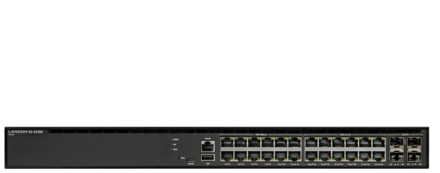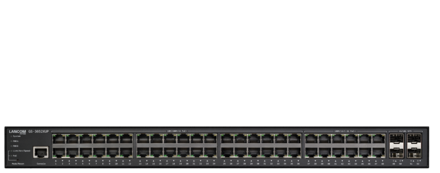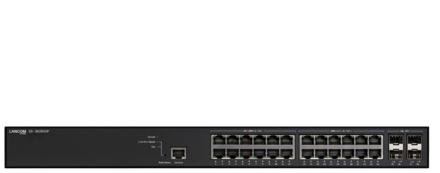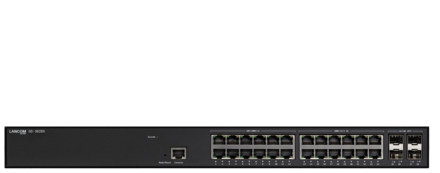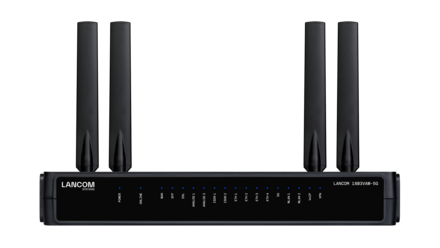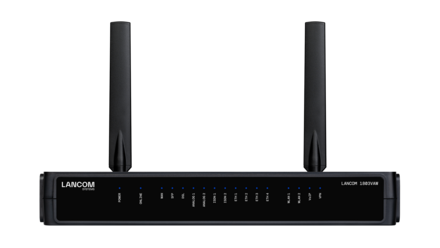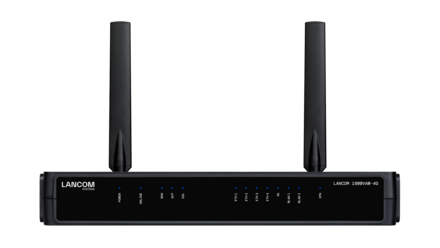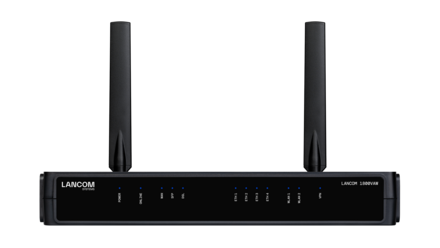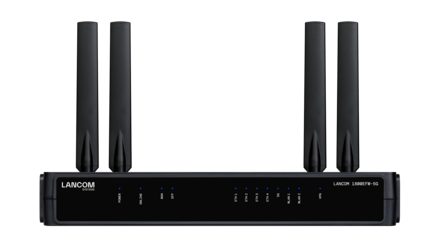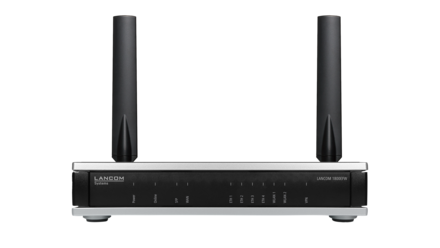Wi-Fi 6, alias IEEE 802.11ax, offers the advantage of lower latency per WLAN client compared to older standards. When it comes to Wi-Fi, it is not so much about being faster: Now it is more about increasing the average throughput per Wi-Fi client. However, with the numbers of WLAN end devices and their transmitted data volumes growing steadily, as well as the increasing density of IoT devices, the load on the available Wi-Fi frequencies has made communication hardly possible without collisions.
This is exactly where Wi-Fi 6E comes into play: It extends the existing Wi-Fi 6 by the 6 GHz band for exclusive WLAN use. Especially in high-density environments, such as football stadiums, airports, or universities, Wi-Fi 6 and Wi-Fi 6E therefore play out their advantages to the full and ensure simultaneous and interference-free operation of many WLAN end devices or IoT devices at highest data rates.
Scenarios with large numbers of users
The weaknesses of previous standards were particularly evident in high-density environments with large numbers of Wi-Fi clients. Multiple clients trying to transmit at the same time will cause data transmissions to collide, so the aim is to reduce this. By making more efficient use of the available bandwidths and channels, Wi-Fi 6 und Wi-Fi 6E bring more stability and reliability to intensively used wireless LANs. The advantage of Wi-Fi 6(E) over former standards is a reduction in latency time for each Wi-Fi client. The available bandwidths are allocated to each client much more efficiently.
More and more IoT devices
The future will see increasing numbers of IoT devices coming into play, so the available bandwidths need to be managed and allocated even more efficiently. The OFDMA technology described below and the available subcarriers will make a significant contribution here. In environments with a very high density of IoT devices, such as in smart cities, high throughput and low latency have an important role to play. While the data generated by IoT sensors must be forwarded quickly, bandwidth-hungry applications should not be excluded or significantly slowed.
Wi-Fi 6E – The VIP area in wireless LAN
Since July 2021, the 6 GHz frequency band has also been officially released for WLAN use in Germany, opening up an exclusive radio field free of interference. With Wi-Fi 6E, the frequency range between 5.925 and 6.425 GHz becomes usable for Europe. 6 GHz WLAN is supported for the first time by the Wi-Fi 6E standard, but not by the predecessor standards Wi-Fi 5 (IEEE 802.11ac) and Wi-Fi 4 (IEEE 802.11n) – like a VIP area in the wireless LAN.
Wi-Fi 6E Access Point: LANCOM LX-6500
The LANCOM LX-6500 supports channel bandwidths of 20, 40, 80, and 160 MHz with 4 streams, thus doubling the previously available WLAN spectrum. This allows transmission rates of up to 4,800 Mbps in 6 GHz, up to 2,400 Mbps in 5 GHz, and up to 1,150 Mbps in 2.4 GHz. This ensures an exclusive, particularly high-throughput and reliable Wi-Fi experience that performs well even with bandwidth-hungry applications such as 4K and 8K video streaming and high device densities. Powered by Power over Ethernet (PoE++) according to IEEE 802.3bt, this Wi-Fi 6E access point unleashes its full performance potential with all the multi-Gigabit Ethernet benefits.
6 GHz frequency band
Wi-Fi 6E opens up additional spectrum in the 6 GHz band exclusively for the device classes "Low Power Indoor" (LPI) and "Very Low Power" (VLP). The advantage: The 6 GHz band is free of interference and thus offers minimum latency and maximum data throughput. The available spectrum in the 2.4 and 5 GHz bands, on the other hand, often represents a bottleneck. For example, the 2.4 GHz frequency band is crowded with a high number of clients, such as baby monitors and microwaves. And the number of users is also rising steadily in the 5 GHz band, where DFS (radar detection) is also a problem.
Device classes for the 6 GHz band
The best-known class "Low Power Indoor" (LPI) includes devices that are operated indoors and via power plug or PoE in Europe, and the use of batteries is prohibited. The maximum equivalent isotropic radiated power (EIRP) is 200 mW (23 dBm). The "Very Low Power" (VLP) class, on the other hand, describes devices that are usually worn close to the body and span a so-called "Personal Area Network" (PAN). Well-known examples are AR/VR headsets and head-up displays in car windows, which also receive their data from an on-board computer or smartphone via Wi-Fi 6E. Their transmitting power is limited to just 25 mW (14 dBm).
8x8 MIMO
Access points with MIMO technology support several independent data links, called spatial streams, for transporting data packets between the transmitter and the receiver. Depending on the number of antennas, an access point can send two, four, or even eight spatial streams at once. Wave 2 of the Wi-Fi 5 standard allowed up to four simultaneous data streams. Wi-Fi 6 and Wi-Fi 6E now support up to eight of these widened fast lanes.
MU-MIMO for downloads and uploads
Wave 2 of the wireless standard Wi-Fi 5 introduced the multi-user MIMO principle (MU-MIMO): By distributing the various spatial streams between several different clients at the same time, rather than serving them one after the other, the efficiency in Wi-Fi has been massively increased—but only for the downlink.
With Wi-Fi 6, MU-MIMO is now available in both directions. This is especially useful in environments with large numbers of Wi-Fi users and bandwidth-hungry real-time applications, as it also improves latency and throughput.
Explanation
With MU-MIMO, the streams can be distributed to multiple clients. For example, an access point with 4x4 MIMO can divide its four spatial streams in parallel between a 2x2 MIMO client and two further 1x1 MIMO clients (such as a notebook or smartphone). This makes the most efficient use of all available spatial streams.
Transmitter x receiver = number of transmitting x receiving antennas
8x8 MIMO = 8 transmitting x receiving antennas
Orthogonal Frequency Division Multiple Access (OFDMA)
OFDMA offers real advantages for Wi-Fi clients with smaller data packets, e.g. IoT devices. Wi-Fi 5 came with Orthogonal Frequency Division Multiplexing (OFDM) as a method for channel management: During data transmission, the entire frequency range of a Wi-Fi channel is occupied per time interval.
The introduction of OFDMA in Wi-Fi 6 brought subcarriers as narrow as 2 MHz, meaning that packets that only contain small amounts of data do not block the entire channel. Several subcarriers share a 20-, 40- or even 80-MHz channel, although if necessary they can be bundled and operated together. This allows Wi-Fi channels to be utilized far more effectively.
It's comparable to carpooling: Large numbers of cars with a single occupant will cause heavy traffic, while fewer, multi-occupant cars can travel faster.
Quadrature Amplitude Modulation (QAM)
QAM increases data throughput by increasing the information density during transmission. The following applies: The higher the QAM level, the higher the data throughput. Compared to QAM-256 (8 bits / symbol) with Wi-Fi 5, Wi-Fi 6 introduces QAM-1024 (10 bits / symbol), delivering 25% more throughput than the previous standard.
Basic Service Set Coloring (BSS Coloring) and Spatial Reuse
The theory: BSS Coloring with Spatial Re-Use is a mechanism that maximizes network performance while reducing the interference between Wi-Fi devices. Wireless networks offer the access points a limited number of channels. If several neighboring access points use the same channel, they will inevitably interfere with one another. In previous Wi-Fi infrastructures, one device could transmit while all the other Wi-Fi devices on the channel had to wait their turn, even if they were far enough away to allow a parallel data transmission. With Wi-Fi 6, wireless devices are learning to communicate with each other more transparently. This is done with a pseudo-coloring of each SSID. Wi-Fi 6 devices can distinguish these colors, detect “different colored” radios on the same channel, and stop interfering with them.
Example for BSS Coloring from everyday life
This technology can be compared with the situation in a restaurant with different groups sitting at different tables. The group at table A is not interested in the conversations of the adjacent table B, so that the people at the next table can talk at a certain volume without the table group A feeling disturbed. Only when a certain threshold/volume is exceeded do the two tables have to discuss their compliance with this threshold; otherwise, one of the groups would have to move to another room.
Longer battery life thanks to Target Wake Time (TWT)
Before Wi-Fi 5 arrived, smartphones, tablets and notebooks had to be ready to receive all the time. If not, arriving data packets would be missed, which was at the expense of the battery charge. With TWT (target wake time), Wi-Fi 6 and Wi-Fi 6E cut down on power wastage on the client side, as the access point and client now negotiate exactly when the receiver should wake up to receive the traffic intended for it. For many a smartphone, this will mean less time tied to the charger.
The progress from Wi-Fi 5 to Wi-Fi 6 results from the close interaction of these features:
- Multi-User MIMO (MU-MIMO)
- OFDMA
- QAM-1024
- Target Wake Time (TWT)
- Basic Service Set (BSS)
In the LANCOM White Paper 2x2 Wi-Fi 6 vs. 3x3 Wi-Fi 5 you can read about the advantages of a wireless LAN infrastructure based on 2x2 MIMO Wi-Fi 6 access points as opposed to an installation with 3x3 MIMO access points with Wi-Fi 5. This document can help you choose the right WLAN infrastructure according to your needs.




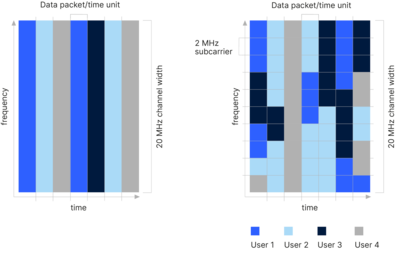
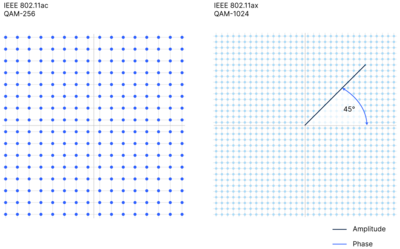
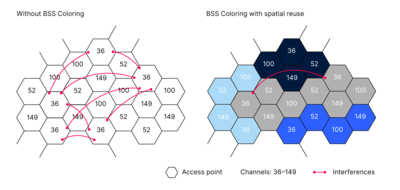
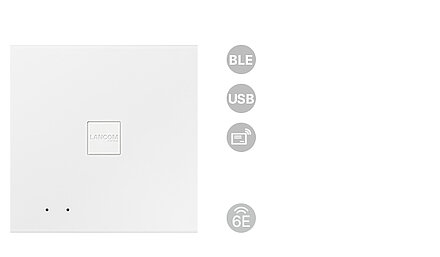

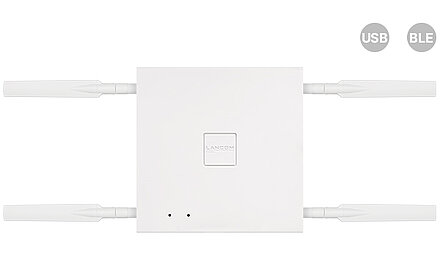
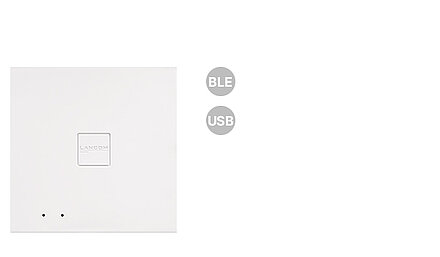
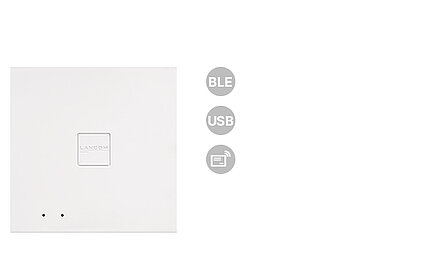


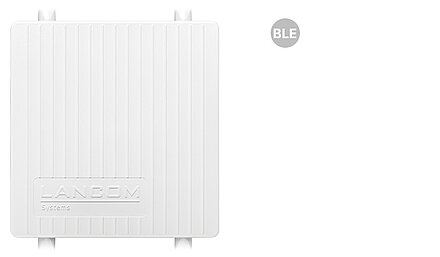

![[Translate to English:] LANCOM OW-602 [Translate to English:] Produktbild LANCOM OW-602](/fileadmin/_processed_/4/b/csm_LANCOM-OW-602-front-overview_5779bfe06e.jpg)
